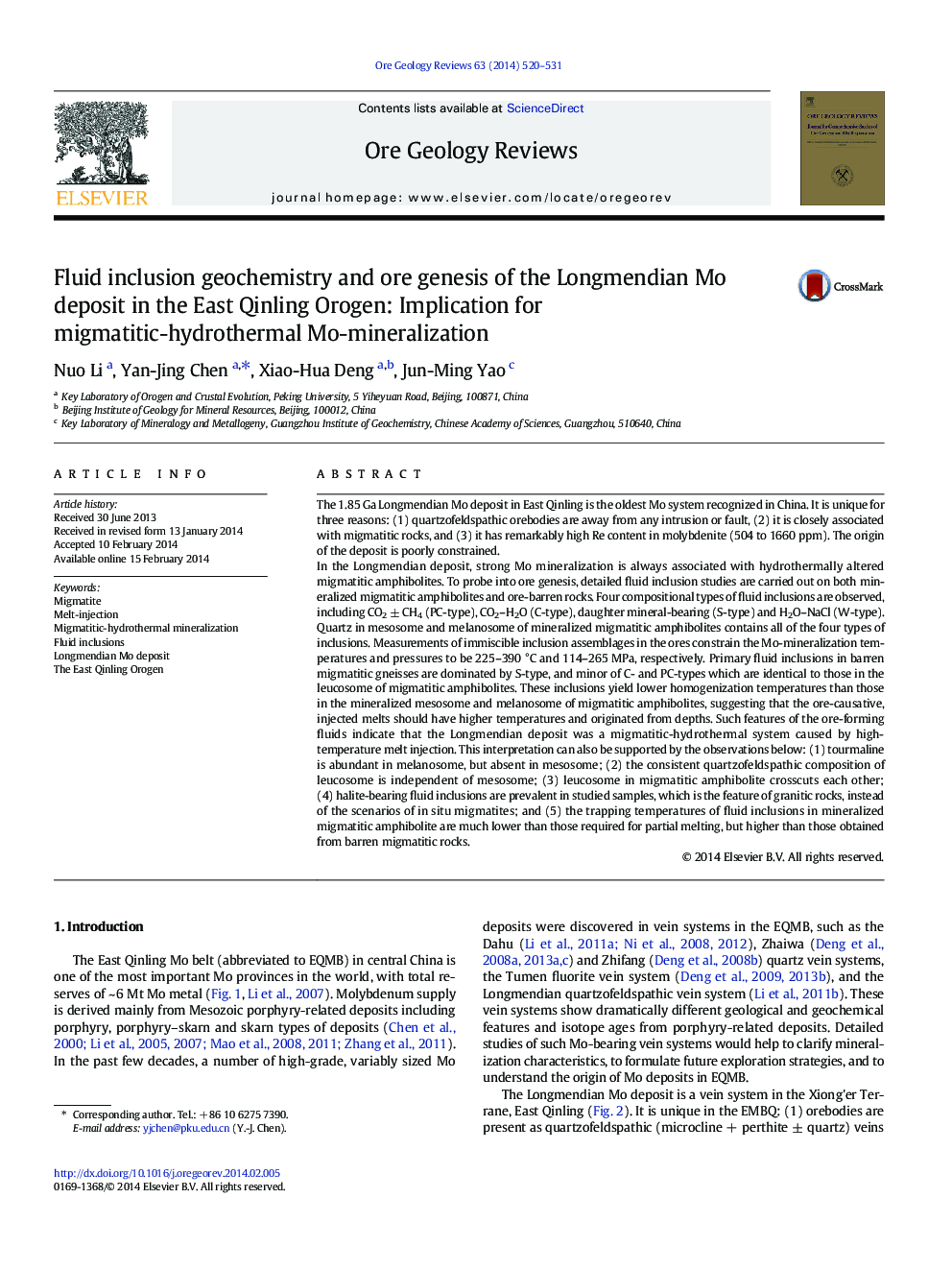| کد مقاله | کد نشریه | سال انتشار | مقاله انگلیسی | نسخه تمام متن |
|---|---|---|---|---|
| 4697227 | 1637240 | 2014 | 12 صفحه PDF | دانلود رایگان |

• The 1.85 Ga Longmendian Mo deposit occur as quartzofeldspathic vein.
• The fluids are featured by high temperature, high salinity and CO2-rich.
• A melt-injection model is proposed for the Longmendian deposit.
The 1.85 Ga Longmendian Mo deposit in East Qinling is the oldest Mo system recognized in China. It is unique for three reasons: (1) quartzofeldspathic orebodies are away from any intrusion or fault, (2) it is closely associated with migmatitic rocks, and (3) it has remarkably high Re content in molybdenite (504 to 1660 ppm). The origin of the deposit is poorly constrained.In the Longmendian deposit, strong Mo mineralization is always associated with hydrothermally altered migmatitic amphibolites. To probe into ore genesis, detailed fluid inclusion studies are carried out on both mineralized migmatitic amphibolites and ore-barren rocks. Four compositional types of fluid inclusions are observed, including CO2 ± CH4 (PC-type), CO2–H2O (C-type), daughter mineral-bearing (S-type) and H2O–NaCl (W-type). Quartz in mesosome and melanosome of mineralized migmatitic amphibolites contains all of the four types of inclusions. Measurements of immiscible inclusion assemblages in the ores constrain the Mo-mineralization temperatures and pressures to be 225–390 °C and 114–265 MPa, respectively. Primary fluid inclusions in barren migmatitic gneisses are dominated by S-type, and minor of C- and PC-types which are identical to those in the leucosome of migmatitic amphibolites. These inclusions yield lower homogenization temperatures than those in the mineralized mesosome and melanosome of migmatitic amphibolites, suggesting that the ore-causative, injected melts should have higher temperatures and originated from depths. Such features of the ore-forming fluids indicate that the Longmendian deposit was a migmatitic-hydrothermal system caused by high-temperature melt injection. This interpretation can also be supported by the observations below: (1) tourmaline is abundant in melanosome, but absent in mesosome; (2) the consistent quartzofeldspathic composition of leucosome is independent of mesosome; (3) leucosome in migmatitic amphibolite crosscuts each other; (4) halite-bearing fluid inclusions are prevalent in studied samples, which is the feature of granitic rocks, instead of the scenarios of in situ migmatites; and (5) the trapping temperatures of fluid inclusions in mineralized migmatitic amphibolite are much lower than those required for partial melting, but higher than those obtained from barren migmatitic rocks.
Journal: Ore Geology Reviews - Volume 63, December 2014, Pages 520–531